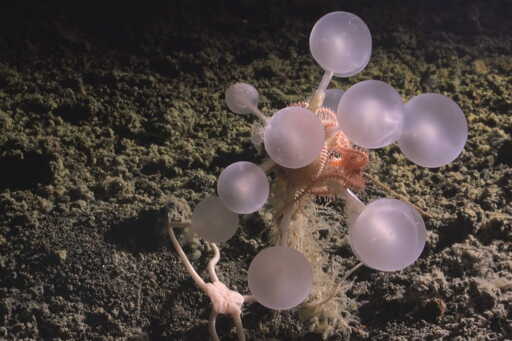In the darkness of the deep ocean, where pressure crushes and light fails, an expedition has found an astonishing array of life, including a carnivorous “death-ball” sponge (from the genus Chondrocladia) covered in tiny prey-catching hooks; “zombie worms” (genus Osedax) lacking mouths but harboring symbiotic bacteria that digest whale bones; armored scale worms of iridescent colors (genus Eulagisca); and rare mollusks adapted to the volcanic seafloor. The footage, recorded in March 2025, confirms 30 previously unknown deep-sea species from one of the planet’s most inaccessible regions in the South Atlantic Ocean. Researchers found new sea stars spanning multiple families (Brisingidae, Benthopectinidae and Paxillosidae), novel crustaceans, and candidate species such as black corals and a potential sea pen genus still under expert review. New iridescent scale worm found by the ROV SuBastian at 2859 metres at the South Trench dive site, northwest of Zavodovski Island. Photo courtesy of Jialing Cai/The Nippon Foundation-Nekton Ocean Census/Schmidt Ocean Institute © 2025 New In-situ sea pen found by the ROV SuBastian at 805 metres at the Mystery Ridge dive site. />Photo courtesy of The Nippon Foundation-Nekton Ocean Census/Schmidt Ocean Institute © 2025 “The Southern Ocean remains profoundly under-sampled. To date, we have only assessed under 30% of the samples collected from this expedition, so confirming 30 new species already shows how much biodiversity is still undocumented,” Michelle Taylor, head of science at The Nippon Foundation–Nekton Ocean Census, said in a statement. Researchers also glimpsed one of Earth’s most mysterious giants deep below. For the first time,…This article was originally published on Mongabay
From Conservation news via this RSS feed


